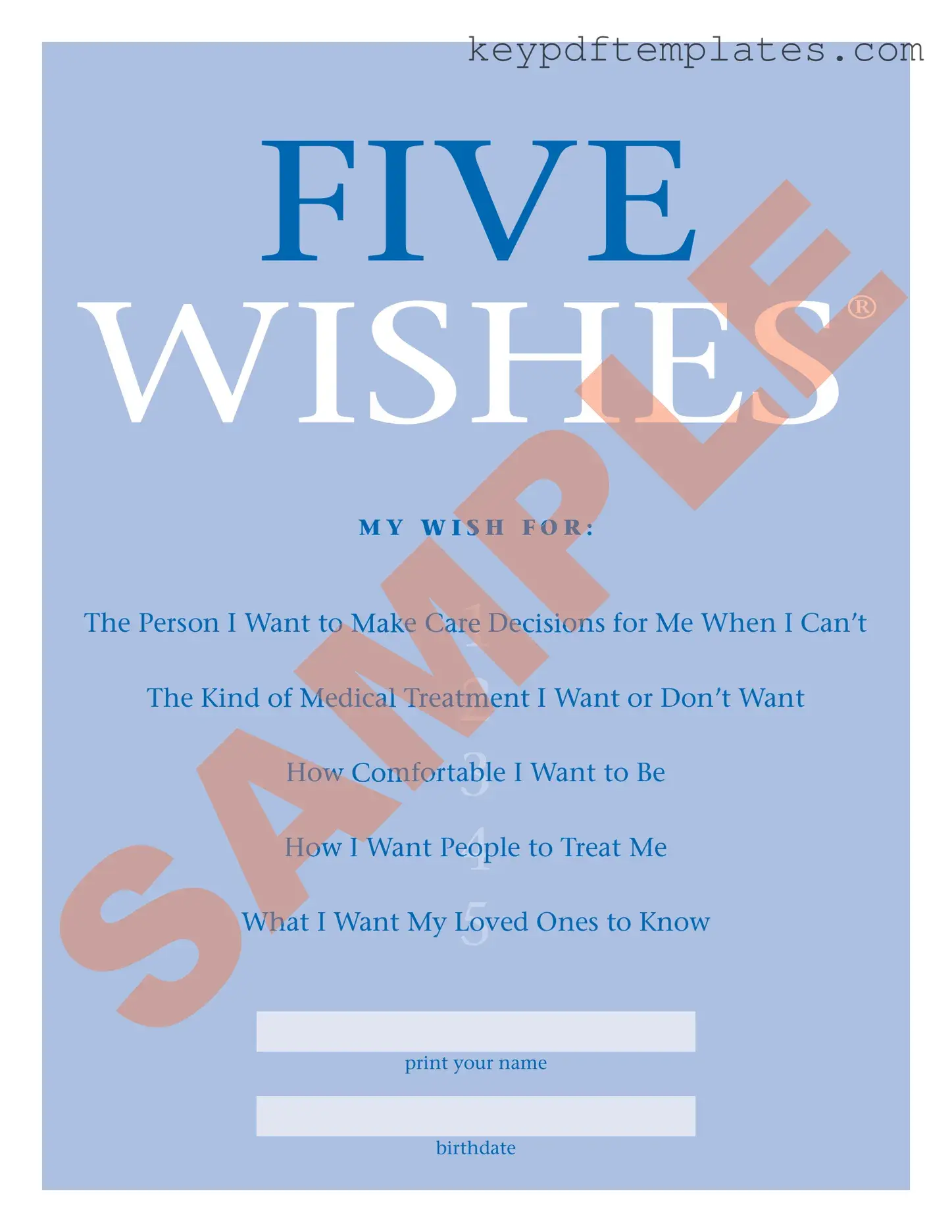Get 5 Wishes Document Form
The Five Wishes Document is a unique form designed to help individuals express their healthcare preferences in a comprehensive manner. It addresses not only medical decisions but also personal, emotional, and spiritual needs, allowing individuals to outline how they wish to be treated in the event of a serious illness. By completing this form, you empower yourself and your loved ones to navigate challenging healthcare decisions with clarity and compassion.
Modify Document Online
